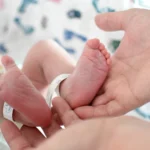ArdorComm Media News Network
July 18, 2025
In a landmark achievement for reproductive medicine, British researchers have successfully delivered eight babies free of mitochondrial disease through an advanced fertility technique known as three-person IVF. This innovative procedure combines the genetic material of two parents with healthy mitochondria from a donor egg, offering new hope to families battling hereditary mitochondrial conditions.
The pioneering work was conducted at Newcastle University, which remains the only UK clinic licensed to perform the treatment under regulations set by the Human Fertilisation and Embryology Authority (HFEA). Among 22 high-risk women who underwent the procedure, seven pregnancies were successful, leading to the birth of eight healthy infants—four boys and four girls, including one set of twins.
How Three-Person IVF Works
Also referred to as mitochondrial donation, the procedure involves extracting the nuclear DNA from a fertilized egg—containing genetic material from both biological parents—and transferring it into a donor egg that has had its nucleus removed but retains healthy mitochondria. This creates an embryo with the parents’ genes and functional mitochondria from the donor.
Because mitochondrial DNA accounts for just a tiny fraction (0.02–1%) of the total genome, this method does not influence the child’s physical traits or personality. Instead, it eliminates the risk of severe, often fatal diseases associated with dysfunctional mitochondria, such as organ failure or neurological disorders.
Clinical Results and Safety
The clinical data is promising. Five of the eight babies showed no trace of mutated mitochondria, while the remaining three had only minimal levels (5–16%)—well below the 80% threshold that typically leads to disease. All infants are developing normally, hitting age-appropriate milestones, with only a few minor, non-mitochondrial-related health issues reported.
These results, published in the New England Journal of Medicine, affirm the therapy’s safety and efficacy in preventing genetic transmission of mitochondrial disorders.
A Regulated Path Forward
The UK became the first nation to legalize mitochondrial donation in 2015, with clinical implementation starting in 2017. Since then, only women who are highly likely to pass on mitochondrial diseases have been approved for treatment, and each case is subject to rigorous ethical and medical review. By mid-2025, around 35 women had been cleared to receive this therapy.
A Future of Promise and Caution
While this scientific milestone brings much-needed optimism to affected families—some of whom have lost children to mitochondrial disease—experts are advocating for continued long-term follow-up. This is especially important because mitochondrial DNA is inherited maternally, meaning that any girls born from this technique could pass the donor mitochondria on to future generations.
The balance between innovation and caution remains vital, but the success of these eight births signals a significant step toward eradicating certain inherited diseases and advancing assisted reproduction.
Source: TOI


